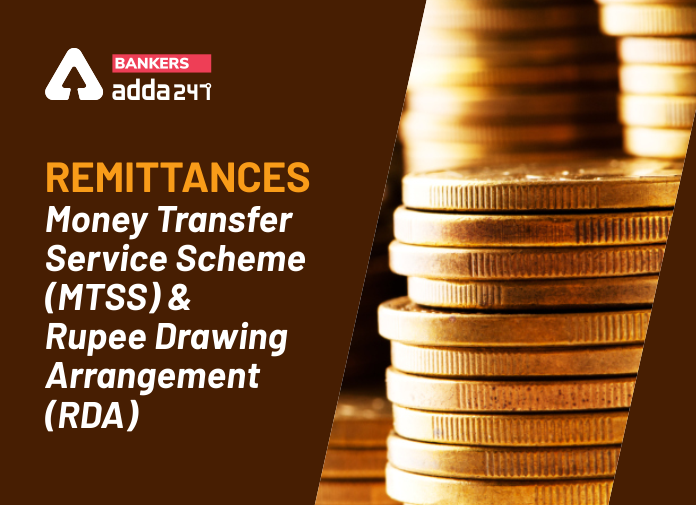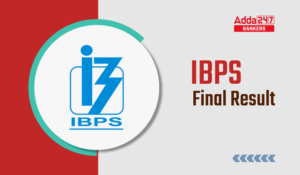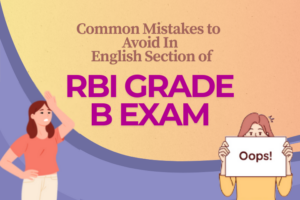Table of Contents
Remittances is a channel which act as a source of income for a family and national income and also are one of the largest sources of external financing. Through banking and postal channels beneficiaries in India can receive cross-border inward remittances. For conducting remittance business banks have general permission to enter into a partnership with other banks. For the postal channel the International Financial System (IFS) platform of Universal Post Union (UPU) is generally used. Rupee drawing arrangement (RDA) and Money Transfer Service Scheme ( MTSS) are two more channels for receiving inward remittances and which are the most common arrangements under which the remittances are received into the country.
Also Check,
- IBPS Clerk Mains 2020 -General Awareness Questions Asked In The Exam
- SBI Clerk Mains 2016: Memory Based Paper – General Awareness
- SBI Clerk Mains 2019 GA Questions Asked
- IBPS Clerk Mains GA Questions 2019
- GA Questions asked in SBI PO Main 2019 Exam
- IBPS RRB PO
What is Money Transfer Service Scheme?
Money Transfer Service Scheme (MTSS) is a channel used by the non-residents of India is a way of transferring personal remittances from abroad to beneficiaries in India. Only inward personal remittances is permitted s towards family maintenance and remittances favoring foreign tourists visiting India are permissible. Generally under this scheme there is a tie-up between reputed money transfer companies abroad which are known as Overseas Principals and agents in India known as Indian Agents who would disburse funds to the beneficiaries in India at the current ongoing exchange rates.
Overseas Principal
The Overseas Principal implies to a registered entity or organization which obtains its license from the central Bank/Government of financial regulatory authority of the concerned for carrying on Money Transfer Activities. The country which is registered under There is a provision that overseas Principal should be AML compliant. It is necessary for the the Overseas Principal entities to obtain necessary authorization from the Department of Payment and Settlement Systems, Reserve Bank of India under the provisions of the Payment and Settlement Systems Act (PSS Act), 2007 to commence/ operate a payment system.
| Banking Awareness For All Bank Exams | Banking History and all the first in Banking | RBI structure and Function | Types of Bank Cards |
How To Become An Indian Agent?
There is a certain procedure that one must follow to become an Indian Agent, the applicant should be an Authorised Dealer Category-I bank or the applicant should be an Authorised Dealer Category-II or the applicant should be a Full Fledged Money Changer (FFMC) or the Department of Posts. Further, there is a provision under which the Indian agents can also be appointed as the sub-agents which can be retail outlets, commercial entities having a place of business, and whose bonafides are acceptable to the Indian Agent.
Limit On The Amount Of Money Which Can Be Sent Under MTSS
There is a cap of USD 2,500 along with thirty remittances can be received by a single individual beneficiary under the scheme during a calendar year.
Also, the amounts up to INR 50,000/- may be paid in cash to a beneficiary in India which can also be loaded on to a pre-paid card issued by banks. If there is any amount exceeding this limit shall be paid by means of account payee cheque/ demand draft/ payment order, etc., or credited directly to the beneficiary’s bank account.
| What Are NBFC And Their Functions | Difference Between Banking and Non-Banking Financial Companies (NBFCs) | Different Types of Banking | List of Public Sector Banks in India |
Rupee Drawing Arrangement (RDA)
Rupee Drawing Arrangement (RDA) is a way through which one can receive cross-border remittances from overseas jurisdictions. As per this system, the Authorized Category I banks enter into tie-ups with the non-resident Exchange Houses in the FATF compliant countries to open and maintain their Vostro Account.
Types of Remittances which can be sent under RDA
RDA is primarily on private account the cross- border inward remittances into India under The remitter and the beneficiary should be individuals barring a few exceptions. Upto a certain limit transaction are also permitted, through Exchange Houses for financing of trade.
What Is The Limit On The Amount Of Money Which Can Be Sent Under RDA?
Currently, there is no limit on the remittance amount as well as on the number of remittances but there is an upper cap of Rs.15.00 lakh for trade related transactions. and there is no cash payment which can be made to the beneficiary under RDA.



 IBPS Final Result 2025 Coming Out Tomorr...
IBPS Final Result 2025 Coming Out Tomorr...
 Simple Tips to Avoid Common Mistakes In ...
Simple Tips to Avoid Common Mistakes In ...
 Important Topics & Shortcuts for IDB...
Important Topics & Shortcuts for IDB...


